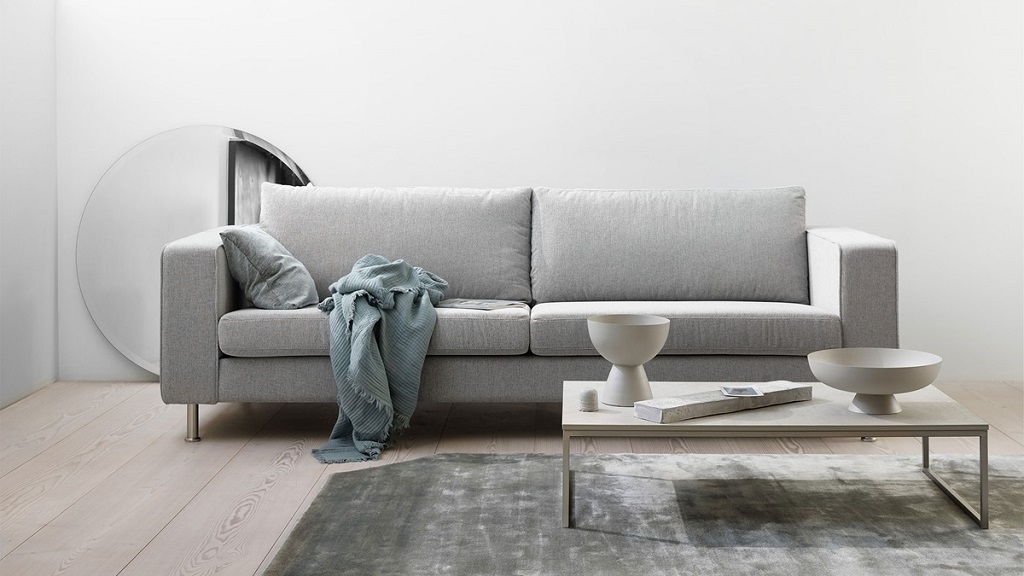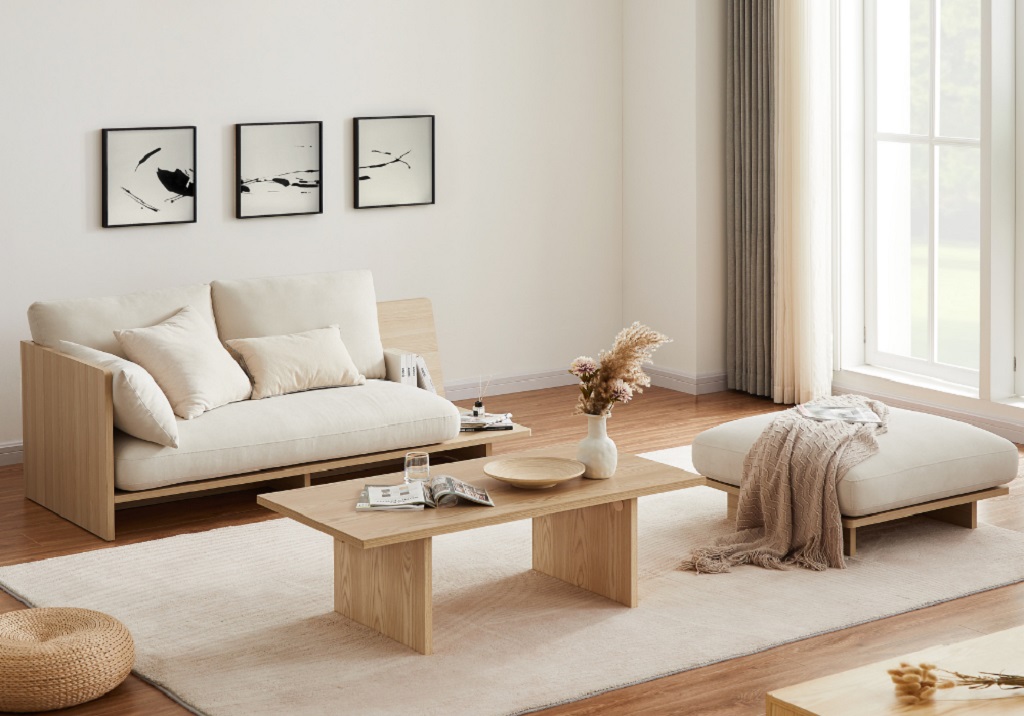The world of interior design is constantly evolving, with trends emerging and fading like the seasons. But recently, a new aesthetic has captured the hearts of design enthusiasts worldwide: Japandi. This unique blend of Japanese and Scandinavian design philosophies offers a captivating fusion of minimalism, functionality, and warmth.
Understanding the Roots: Japandi’s Philosophical Fusion
To truly appreciate Japandi, it’s important to understand its components.
-
Japanese Design (Wabi-Sabi): Rooted in Zen philosophy, Japanese design emphasizes simplicity, natural materials, and the acceptance of imperfection (Wabi-Sabi). Clean lines, uncluttered spaces, and a focus on craftsmanship are hallmarks of this aesthetic. Think tatami mats, shoji screens, and a muted color palette.
-
Scandinavian Design (Hygge): Hygge, a Danish concept, embodies coziness, functionality, and a connection to nature. Scandinavian design prioritizes light, comfort, and a sense of well-being. Think light wood tones, soft textures, and clean, functional furniture.
The Magic of Merging: What Makes Japandi Special
Japandi takes the best of both worlds, creating a space that is both minimalist and inviting. Here’s how it achieves this balance:
-
Emphasis on Natural Materials: Both Japanese and Scandinavian design traditions favor natural materials like wood, stone, and bamboo. Japandi embraces this concept, creating a sense of connection with nature indoors. Think exposed wooden beams, woven baskets, and natural stone countertops.
-
Minimalism with Warmth: While minimalism is a core principle, Japandi avoids the stark coldness sometimes associated with it. Warm woods, soft textiles like linen and wool, and pops of color through natural elements like flowers or artwork add a touch of coziness.
-
Functionality at its Finest: Both Japanese and Scandinavian designs prioritize form following function. Japandi continues this tradition, ensuring every element in the space serves a purpose. Think hidden storage solutions, multifunctional furniture, and clean lines that promote easy movement.
-
Light and Airy Appeal: Japandi spaces prioritize natural light, making them feel open and inviting. Large windows, light-colored walls, and strategic placement of furniture ensure a sense of spaciousness.
-
Celebrating Imperfections: The Wabi-Sabi influence brings a unique charm to Japandi. Imperfections in natural materials, like the knots in wood or the slight variations in ceramic textures, are celebrated rather than hidden. This adds depth and character to the space.
Bringing Japandi Home: Practical Tips for Implementation
Now that you’re captivated by the allure of Japandi, let’s explore how to incorporate this trend into your own space:
-
Start with a Neutral Color Palette: Light greys, beiges, and whites form the foundation of a Japandi space. These colors create a sense of calm and openness, allowing natural materials and pops of color to shine.
-
Embrace Natural Materials: Wood is a key player in Japandi. Opt for light wood tones for furniture, flooring, or even wall accents. Stone elements like countertops or pebbles in a vase add a touch of texture. Don’t forget woven materials like baskets or rugs to introduce warmth.
-
Prioritize Functionality: Every piece of furniture in a Japandi space should serve a purpose. Invest in multi-functional pieces like ottomans with storage or sofa beds. Built-in shelves and cabinets maximize space utilization while maintaining a clean aesthetic.
-
Let the Light In Maximize natural light by keeping windows uncluttered and opting for light-filtering curtains. Consider the strategic placement of mirrors to reflect light and create a feeling of spaciousness.
-
Incorporate Wabi-Sabi Elements: Imperfections are beautiful in Japandi. Embrace the natural variations in wood grains, the subtle asymmetry of handmade ceramics, or the textured beauty of woven textiles.
-
Add Pops of Color: While the base palette remains neutral, introduce pops of color through artwork, throw pillows, or a statement vase. Opt for natural colors like muted greens, earthy browns, or calming blues that complement the overall aesthetic.
-
Don’t Forget Texture: Layering textures adds visual interest and depth to a Japandi space. Combine smooth wood with woven baskets, plush throws with crisp linens, and rough stone with soft rugs.
-
Accessorize with Intention: Keep accessories minimal and focus on natural elements like bonsai trees, potted plants, or smooth pebbles in a bowl. Artwork with clean lines, nature-inspired motifs, or traditional Japanese prints like woodblock prints can add a touch of personality.
Beyond Aesthetics: The Benefits of a Japandi Space
Japandi’s appeal goes beyond its visual beauty. This design philosophy promotes a sense of well-being and mindfulness, making it a perfect choice for our modern lives:
-
Reduced Stress and Anxiety: The minimalist nature of Japandi, with its emphasis on clean lines and uncluttered spaces, can create a calming and serene environment. This can help reduce stress and anxiety, promoting relaxation and mental clarity.
-
Improved Focus and Productivity: The focus on functionality in Japandi ensures that everything has a designated place. This reduces visual clutter and promotes a sense of order, which can improve focus and productivity.
-
Connection with Nature: The use of natural materials and the emphasis on light bring the outdoors in. This connection with nature can have a positive impact on mood, promoting feelings of calmness and well-being.
-
Mindful Living: Japandi encourages a more mindful approach to living. By surrounding yourself with objects that serve a purpose and celebrate imperfections, you’re more likely to appreciate the simple things in life and practice gratitude.

Japandi: A Trend Here to Stay
Japandi’s unique blend of minimalism, functionality, and warmth has captured the imagination of design enthusiasts worldwide. Its focus on natural materials, a neutral color palette, and light-filled spaces create a calming and inviting atmosphere that promotes well-being.
Whether you’re a seasoned design aficionado or simply looking to create a more serene and stylish home, Japandi offers a compelling approach. By incorporating its core principles and practical tips, you can transform your space into a haven of tranquility and mindful living, reflecting the beauty of both Japanese and Scandinavian design philosophies.
Related: How to plan the interior design of a house?
Additional Considerations:
While Japandi offers a fantastic design framework, remember that it’s not a rigid set of rules. Here are some additional thoughts:
- Personalize Your Space: While the core principles provide a strong foundation, don’t be afraid to personalize your Japandi space with pieces that reflect your unique style and interests.
- Embrace Sustainability: Japandi’s emphasis on natural materials aligns perfectly with sustainable design practices. Look for furniture made from recycled wood, incorporate vintage finds, and invest in high-quality, long-lasting pieces.
- Let There Be Light: Natural light is crucial in Japandi. If you have limited natural light, consider strategic use of artificial lighting, opting for warm white bulbs and layered lighting solutions.
By understanding the essence of Japandi, embracing its core principles, and personalizing it to your taste, you can create a space that is both beautiful and functional, a true reflection of your mindful living philosophy.








